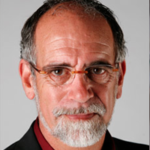
There are buoys, far out in the ocean, that bob in the waves and signal, through satellites, when the surf will rise at Mavericks on the California coast, or when the tsunami will hit.
Here comes.
Healthcare in the U.S. is a hollow economy, inflated, impossible, all over patches and gimcracks and work-arounds puffed up on clouds of hot air generated by sweaty, dedicated crews of policy panjandrums and podium pundits burning forests of acronyms. True, that’s just looking at the bad side. But this bad side goes all the way around.
Will it pop? Will it undergo catastrophic exothermal deformation? Is it the Hindenburg nearing Lakehurst? This could be.
Look, this is the 21st Century. Whatever its name, catastrophic deformation, restructuring, “disruption,” or “creative destruction,” this is normal for businesses, industries, entire sectors. We have talked and whined and freaked out about massive change in healthcare since we had a peanut farmer in the Oval Office, and it hasn’t happened. Not really. Trust me, I was there, I watched it not happen. Nothing like the video stores, big-box malls, and Fotomats whose husks litter the landscape like the yonquerías of Baja. Nothing like Eastern Airlines, Western Airlines (“The only way to fly”), Northwest Airlines, Pacific Southwest with its dayglo go-go-booted stews, PanAm, and all the others whose logos adorn the Electras, L-1011s, 727s and Constellations parked wingtip to wingtip in the Mojave.
Healthcare has planetary inertia, gas giant inertia. It snacks on cost-cutting schemes like DRGs and Certificate of Need commissions and just gets bigger. It downs slices of GDP — 12 percent, 15, 18, 19 — and just gets bigger. Right through recessions, reforms, budget cuts. It’s Hungry Mungry. Its extraordinary resistance to deep transformation, compared to other industries and sectors, makes us ask why. What is holding it together? And makes us ask: What would do it? What would puncture this hollow, makeshift gas envelope?









 If it weren’t for the round, scaly patch on the young woman’s shoulder, her doctor might never have known that she served in the Navy for 6 years. He wouldn’t have learned about her sun exposure during a year-long station in east Africa, where temperatures regularly reached over 100°F. But because he didn’t ask about her military history, he didn’t hear about the burn pits and dust storms that filled her lungs with toxic particles. He didn’t hear about the infectious diseases to which she was exposed. He didn’t hear about whether or not she was exposed to combat, or if she experienced military sexual trauma. Perhaps if she were an older man with fading tattoos and a Marine Corps baseball cap, he might have thought to ask.
If it weren’t for the round, scaly patch on the young woman’s shoulder, her doctor might never have known that she served in the Navy for 6 years. He wouldn’t have learned about her sun exposure during a year-long station in east Africa, where temperatures regularly reached over 100°F. But because he didn’t ask about her military history, he didn’t hear about the burn pits and dust storms that filled her lungs with toxic particles. He didn’t hear about the infectious diseases to which she was exposed. He didn’t hear about whether or not she was exposed to combat, or if she experienced military sexual trauma. Perhaps if she were an older man with fading tattoos and a Marine Corps baseball cap, he might have thought to ask.









